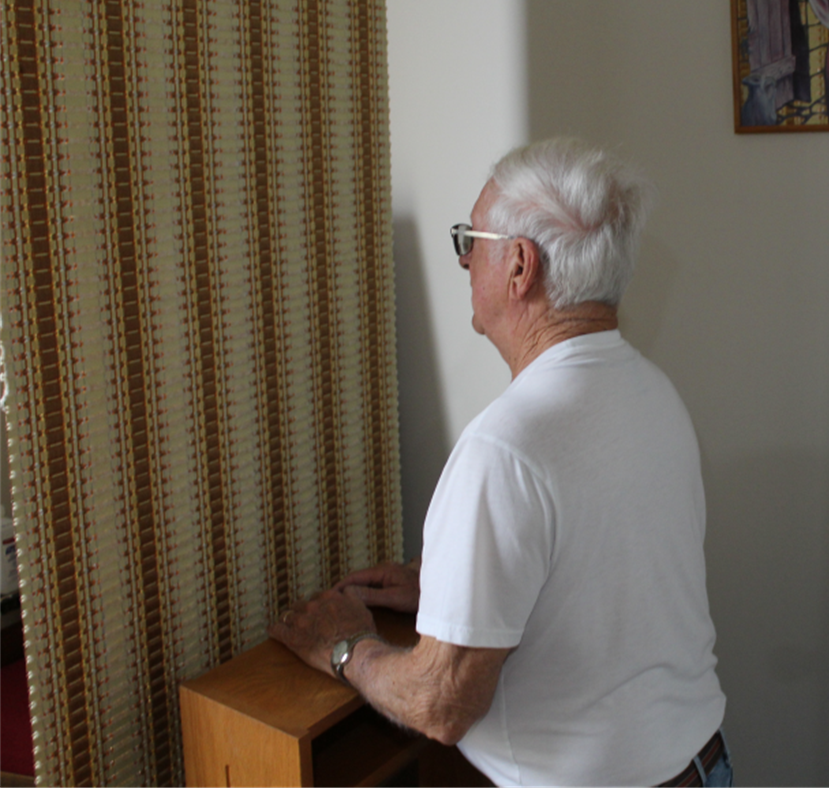“On the evening of that first day of the week, when the doors were locked, where the disciples were, for fear of the Jews, Jesus came and stood in their midst and said to them, “Peace be with you.” When he had said this, he showed them his hands and his side. The disciples rejoiced when they saw the Lord. [Jesus] said to them again,“Peace be with you. As the Father has sent me, so I send you.” And when he had said this, he breathed on them and said to them, Receive the holy Spirit. Whose sins you forgive are forgiven them, and whose sins you retain are retained” (John 20:19-23).
The Catholic Church teaches that this authority to forgive sins has been passed down through the apostles to bishops and priests through apostolic succession.
Confession Times:
Saturday 3:30-4:10 PM
By appointment– please call the Parish Office at 352-489-3166
All children prepare for First Penance/Reconciliation prior to preparation for First Holy Communion with enough time allotted between the two out of respect for the dignity of each sacrament.

How to go to Confession
Going to confession can feel intimidating at first, but most people leave with a sense of relief, freedom, and a lighter heart.
At St. John’s, weekly confessions are held in the Divine Mercy Chapel/Cry Room, located off the narthex on the right. A lit cross above the door indicates that a priest is available. Please check that no one else is in the confessional with the priest before entering, as others may be waiting in the pews.
Inside the confessional, you may choose to kneel behind the screen for anonymity or sit across from the priest. Begin with, “Bless me, Father, for I have sinned,” and let the priest know how long it has been since your last confession. Then, confess your sins, including any not previously confessed. There’s no need for unnecessary details—simply acknowledge your sins, especially serious ones.
Confession is not intended for long conversations. If you need more time, you can schedule a private appointment through the parish office.
After your confession, the priest will guide you through prayers for forgiveness and ask you to make a sincere Act of Contrition, completing this healing sacrament.
“Oh my God I am heartily sorry for having offended you and I detest all my sins because of your just punishment but mostly because they offend You, my God who are all good and deserving of my love. I firmly resolve with the help of your grace, to sin no more and to avoid the near occasion of sin. Amen.”
(The Act of Contrition has a few different forms. If this is not the one you learned, don’t worry. Use the one you learned.)
As you are praying the Act of Contrition or right afterwards, the priest will bestow upon you the forgiveness of Christ. Note: it is not the priest who forgives your sins but Jesus himself, working through the priest.
The priest will give you a penance to say. If the penance is a form of prayer, please leave the confessional after thanking the priest and sit or kneel in a pew and say your penance reverently. If your penance is an action (pulling weeds, apologizing to someone, repaying what was stolen, etc.) complete it within the next few days so that you do not forget.
History of Confessing to a Priest
The history of confession to a Catholic priest evolved from early Christian practices of public and private acts of penance and spiritual guidance, becoming a formal, repeatable Sacrament of Reconciliation enshrined in Church law of the 13th century, particularly after the Fourth Lateran Council of 1215. This council mandated annual confession and emphasized the sacred obligation of the confessor to keep the confession secret, a practice rooted in the belief that priests act as Christ’s agents to grant forgiveness and absolution.
Early Church and Public Penance
- Biblical Roots: The practice is linked to biblical passages like James 5:16, which speaks of confessing sins to one another and praying for healing.
- Early Confessionals: In the early Church, some Christians confessed publicly, especially for sins that were already known to the community, such as apostasy.
Development of Private Confession
- Spiritual Guides: Even in the third century, some individuals sought out spiritual guides to reveal the state of their soul.
Irish Influence:
A significant development occurred in medieval Ireland, where the practice of individual, repeatable confession to a priest began to emerge.
Formalization and the Fourth Lateran Council (1215)
The Fourth Lateran Council solidified private confession as a central part of Catholic life, obligating all the faithful to confess their sins to a priest at least once a year.
Reconciliation and Absolution: The council sought to reunite the personal acts of the penitent (contrition, confession, satisfaction) with the Church’s act of absolution, with the priest mediating Christ’s forgiveness.
The Seal of Confession
- Priestly Obligation:
- The council also strongly emphasized the seal of confession – the absolute duty of priests to keep confessions secret.
Severe Penalties:
- Violating the seal carried heavy penalties for priests, including excommunication and removal from their office, underscoring the seriousness of this confidentiality.
Evolution of the Confessional
Cardinal St. Charles Borromeo: Cardinal St. Charles Borromeo is often credited with campaigning to introduce the confessional in parish churches in the mid-16th century, leading to more formal and secluded spaces for this sacrament.
Physical Confessionals: The actual physical structure of the confessional, a private booth, developed later.
